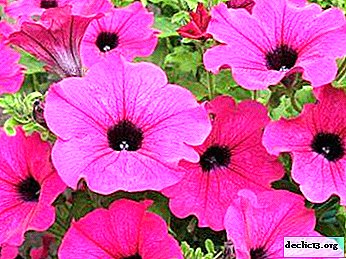Why do tips of leaves and other parts dry in spathiphyllum, and how to help it - home care tips

Even with proper care of indoor flowers, problems can still not be avoided. Undemanding and hardy plants can unpleasantly surprise. Changes in the appearance of the flower may indicate a need for correction of the content parameters.
In another case, they signal about minor deviations from the norm of the care program. Still others require serious intervention. Next, we will explain why leaves, flowers dry on spathiphyllum and how to properly care for the plant in order to avoid this problem in the future.
What is this problem?
Dry condition is a sign of leaf dying. A harbinger of this phenomenon is a change in the color of the leaf plate, when, as a result of adverse factors or natural aging, the flower ceases to produce chlorophyll. As a result, it is colored in the color of auxiliary pigments, mainly in yellow.
If the sheet is dry, then it cannot perform its direct functions:
- photosynthesis;
- gas exchange;
- transpiration.
The structure of the sheet plate becomes brittle, easily crumbles, cracks are possible. Over time, such a leaf falls off.
Photo
This is how a drying plant looks like:




Why does the flower of female happiness turn yellow and dry?
A similar phenomenon occurs as a result of a natural process or as a result of a change in the general condition of the plant. The death of the leaf is directly related to the poor functioning of the root system, which is not able to fully provide the spathiphyllum with nutrients and moisture. Causes of exotism
- Lighting. An improperly selected place, such as a window sill on the south side, can dry the leaf plate of the flower. The hot rays of the sun provoke yellowing, spots, the so-called thermal burns.
- Humidity. Spathiphyllum needs high humidity. Dry air leads to condensation of moisture from the green surface of the leaves, which provokes rapid drying. This parameter can be created manually with a spray bottle of water or using a household humidifier.
- Temperature. Room exot should be in a warm room, but away from radiators and drafts. Sudden changes in temperature are extremely negative for leaves, especially for delicate flowers.
- The big pot. The roots of a plant planted in an improper container cannot fully fill the entire space. Therefore, water stagnates, alkalization of the substrate, the formation of harmful gases, the development of pathogenic microflora, as a result of which the rhizome rots.
- Not suitable soil. Spathiphyllum prefers loose, slightly acidic soil enriched with minerals. When buying a finished substrate, you can add a little natural baking powder, but peat, it is better to have less.
- Incorrect irrigation mode. The death of the root system is often caused by uneven moisture.Important! Overdrying the soil or the bay is dangerous enough for the roots. Spathiphyllum prefers moist, but not wet ground and moderate watering.
- Nutrient deficiency. Such a phenomenon is possible if a room exot has not been transplanted for a long time. Depleted the ground. Or, in the process of leaving, top dressing is not used at all, as a result, a peculiar “starvation” sets in. This condition can be easily corrected by introducing complex mineral fertilizers into the regime.
Effects
 The first sign of future leaf dryness is dry ends. In the future, if no measures are taken, it is possible that the leaves completely dry and fall. If the cause of this process is aging, then that's okay. At this point, a new young shoot will appear.
The first sign of future leaf dryness is dry ends. In the future, if no measures are taken, it is possible that the leaves completely dry and fall. If the cause of this process is aging, then that's okay. At this point, a new young shoot will appear.
It is bad when very young shoots dry. This is a serious reason for decisive action. With complete passivity, you can lose the plant. The drying of the roots entails the drying of the green mass, subsequently the death of the exot.
What to do if dry out?
Leaves
If the plant dries the leaves, the reason most likely lies in the lighting, improper composition of the soil mixture, temperature or insufficient watering. Consider a set of measures to eliminate such a nuisance.
- Provide a room flower with a well-lit accommodation.
- In the summer, the bright rays of the shade of a tulle curtain.
- If possible, move the pot to the window on the east or west side.
- The room should be warm.
- In winter, cover heating appliances with a damp terry towel.
- Avoid drafts.
- Do not take the plant out in the cold.
- With irregular watering, frequent drying of the soil, a flower with a pot is dipped in a container of water.
- Leave for recharge for half an hour.
- You can spray the green mass with a warm shower.
- In the future, control watering.
Foliage tips
This the symptom is directly related to the dry air in the room, as well as a lack of nutrition. In such a case should be taken.
 Apply complex mineral fertilizers.
Apply complex mineral fertilizers.- Apply no more than 1 time in 7-10 days.
- Follow the fertilizer instructions on the packaging.
- It is preferable to use drugs in liquid form.
- Spray moisture from a spray bottle every day.
- Put a tray with wet sand, expanded clay, pebbles.
- Wash leaves with soap and water at least 1 time per week.
- Use a household humidifier.
- Arrange regularly warm showers for green foliage.
Flowers
Spathiphyllum really prefers moist soil, but sometimes the owners can’t find the right moisture limit. As a result, the soil is oversaturated with water. In this case, problems arise with roots that are constantly in the wet substrate, the process of decay develops.
Reference. A healthy root system is vital for flowers. The deterioration of the condition of the roots, respectively, is reflected in the leaves, flowers, which in turn turn yellow, dry out.To correct this kind of error, you should:
- Extract the plant from the pot, inspect the roots.
- Rinse them with warm water.
- Use a sharp knife to remove rotten, non-living roots.
- Trim yellow shoots.
- Slices should be disinfected with ground cinnamon.
- Leave for a while to dry.
- Transplant the flower into a new dry soil, with a mandatory drainage layer.
- Watering immediately after transplantation is not necessary.
- To control the frequency of irrigation.
More nuances are what drying up of spathiphyllum is, why this happens and what to do to save a flower, find out in this material.
How to care for prevention?
Regardless of the reason for the drying of the sheets, in order to avoid such problems, general hygiene measures should be followed.
 To prevent the risk of soil contamination and eliminate salt deposits, periodically clean off white deposits from the soil surface, the top layer can be replaced with new soil.
To prevent the risk of soil contamination and eliminate salt deposits, periodically clean off white deposits from the soil surface, the top layer can be replaced with new soil.- Be sure to wash off the dust from the leaves, water the plant with a warm shower.
- Inspect for harmful insects.
- For irrigation use clean, settled, soft water without impurities, preferably at room temperature.
- Control the amount of water poured into the pot.
- Identify the plant in a bright place. In summer, it is better to choose a partial shade, or to shade bright rays.
- Keep away from heaters in winter.
- Periodically feed the exot with complex mineral fertilizers year-round.
Further care at home
In the future, adhere to all of the above activities, as well as:
- Maintain in a room where spathiphyllum, temperature + 22-25 ° C.
- In winter, temperatures below + 15 ° C should not be allowed.
- It is important that when airing the flower does not get cold air.
- Humidity room exot prefers high 50-60%.
- Every day to spray 2-3 times.
- Do not forget about complex nutrition.
- Before flowering, it is better to use preparations with a high content of magnesium, phosphorus and potassium.
It is better to eliminate the minimum errors in care, and restore the plant to its former healthy appearance, than after taking emergency measures to return it to life. If you notice small changes, then first of all pay attention to the growing parameters. Review the care rules. Do not throw everything to chance.

 Apply complex mineral fertilizers.
Apply complex mineral fertilizers. To prevent the risk of soil contamination and eliminate salt deposits, periodically clean off white deposits from the soil surface, the top layer can be replaced with new soil.
To prevent the risk of soil contamination and eliminate salt deposits, periodically clean off white deposits from the soil surface, the top layer can be replaced with new soil.















